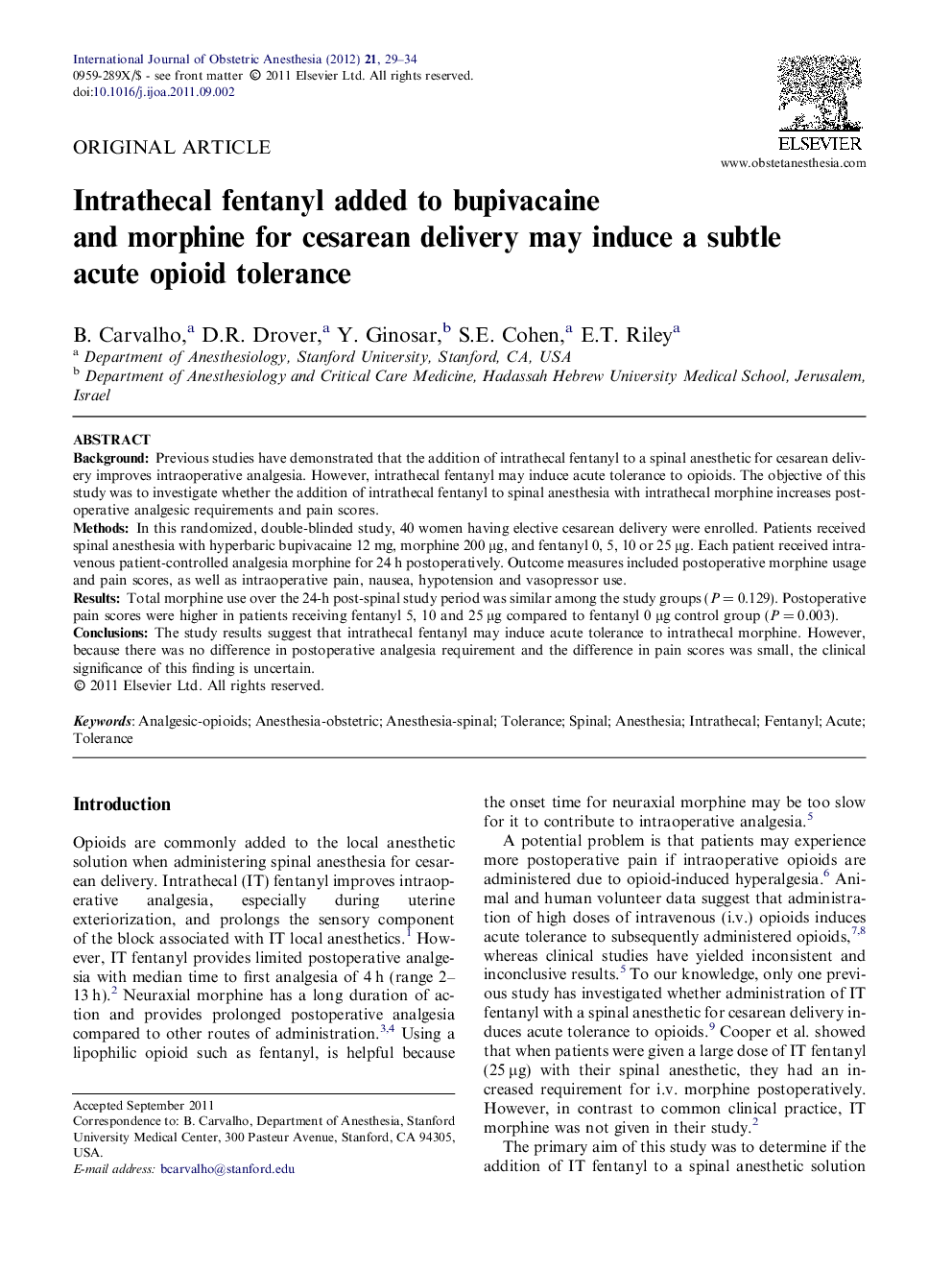| Article ID | Journal | Published Year | Pages | File Type |
|---|---|---|---|---|
| 2757748 | International Journal of Obstetric Anesthesia | 2012 | 6 Pages |
BackgroundPrevious studies have demonstrated that the addition of intrathecal fentanyl to a spinal anesthetic for cesarean delivery improves intraoperative analgesia. However, intrathecal fentanyl may induce acute tolerance to opioids. The objective of this study was to investigate whether the addition of intrathecal fentanyl to spinal anesthesia with intrathecal morphine increases postoperative analgesic requirements and pain scores.MethodsIn this randomized, double-blinded study, 40 women having elective cesarean delivery were enrolled. Patients received spinal anesthesia with hyperbaric bupivacaine 12 mg, morphine 200 μg, and fentanyl 0, 5, 10 or 25 μg. Each patient received intravenous patient-controlled analgesia morphine for 24 h postoperatively. Outcome measures included postoperative morphine usage and pain scores, as well as intraoperative pain, nausea, hypotension and vasopressor use.ResultsTotal morphine use over the 24-h post-spinal study period was similar among the study groups (P = 0.129). Postoperative pain scores were higher in patients receiving fentanyl 5, 10 and 25 μg compared to fentanyl 0 μg control group (P = 0.003).ConclusionsThe study results suggest that intrathecal fentanyl may induce acute tolerance to intrathecal morphine. However, because there was no difference in postoperative analgesia requirement and the difference in pain scores was small, the clinical significance of this finding is uncertain.
